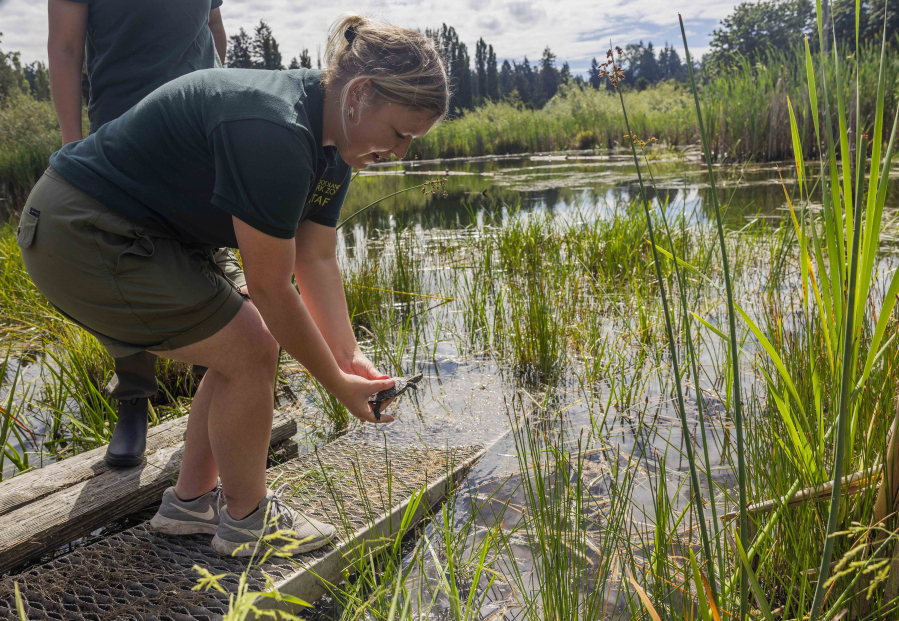LAKEWOOD — Nearly a year they wait, munching on crickets, mealworms and small chunks of fish to pass the time.
But Friday morning, their time came.
At a small pond in the Lakewood area — the precise location of which must be kept secret to protect the endangered species — state and local officials released 31 northwestern pond turtles back into the wild.
For the briefest moment the turtles floated in the water, one at a time, before diving under the surface. Adult turtles, released years earlier, basked in the late morning sun farther out in the pond, lining up on floating logs.
The hope, said Sue Sandersen, a zookeeper for the Woodland Park Zoo, is that by raising the turtles in captivity they’ll be strong enough to survive in the wild. Or, at the very least, large enough to avoid the invasive bullfrogs that have become their main predator. In nearly three decades, these sorts of restoration efforts run by the zoo and the Washington Department of Fish and Wildlife have been enough to hold on to the species.



